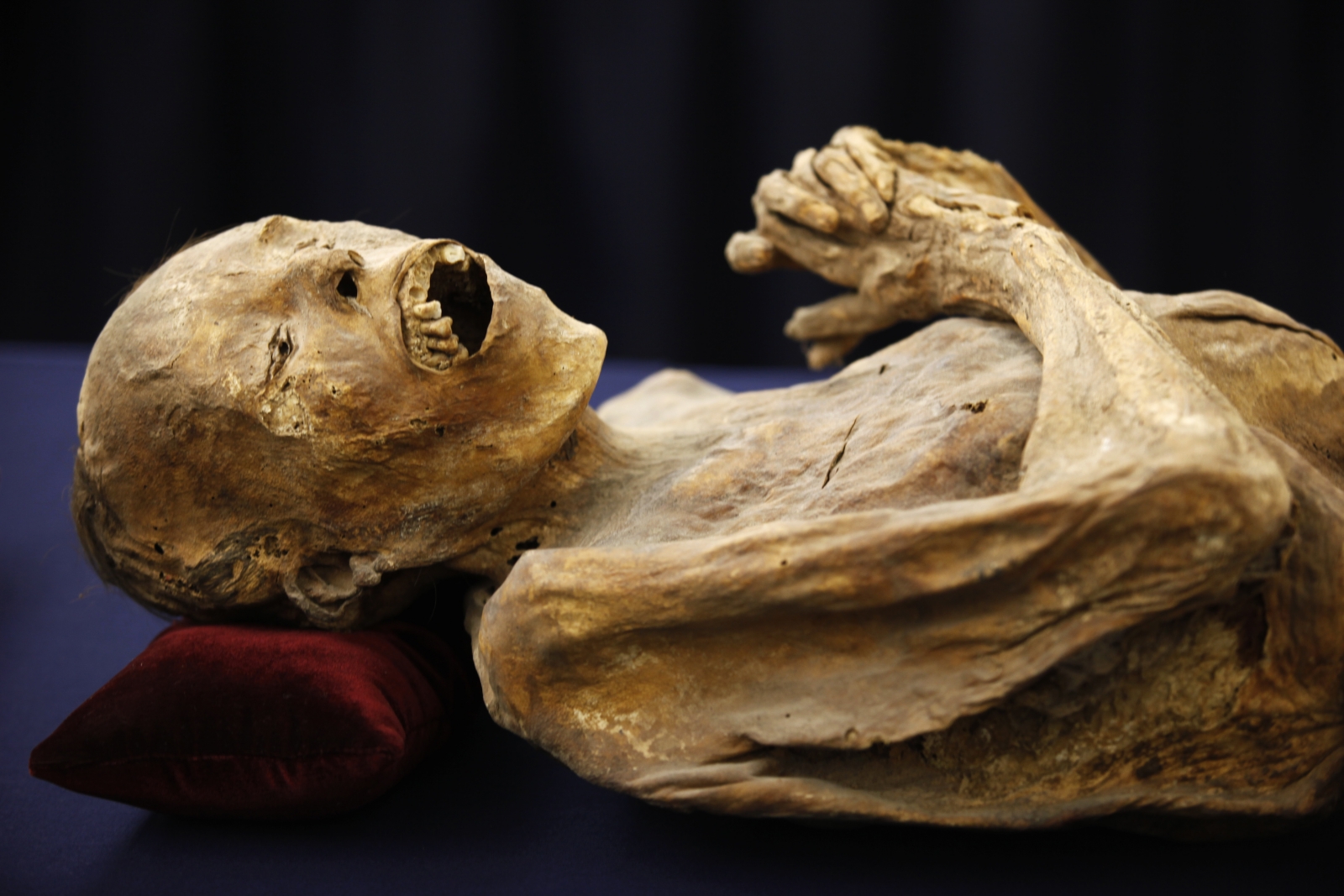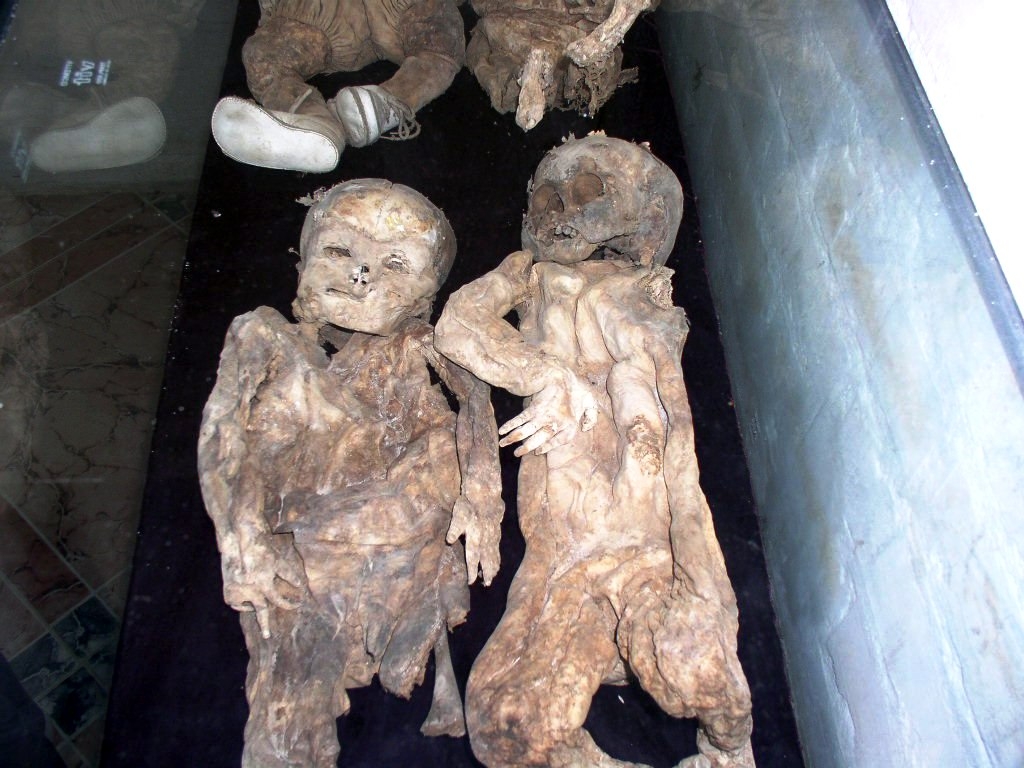More than a dozen of the bodies are on display in glass cases at a mausoleum in San Bernardo, Colombia, high within the Andes and 40 miles southwest of the country’s capital Bogota.

Why they’re so well-preserved is a mystery, although some experts think it’s because of the local climate and altitude, which could affect the chemical composition of the earth and act like a natural embalmer.

However, locals think it’s due to a native diet that includes guatila, also known as chayote, a green, spiky fruit — although this theory does not account for why the mummies’ clothes are in a good state of preservation too.

San Bernardo’s mummified bodies, which belonged to people born in roughly the last 100 years, were first discovered in the 1950s when a local cemetery was relocated because of a flood.
Identities of the dead at San Bernardo are known — in fact, above each body are plaques that offer personal descriptions, such as ‘Margarita…was very dedicated as homemaker, she always offered corn cakes and coffee to everyone.’

Some relatives of the dead even come to see what is left of their family member and pay their respects — including a man called Ever Pabon, whose father is among those on display, laid out in a gray-checkered suit.
‘Most people who lose their parents put them in the ground or cremate them and can never see them again,’ Mr Pabon told the Wall Street Journal in 2015. ‘But if I miss him, I can see him any time, and he’s exactly how he was in life.’
Mr Pabon said he visits his father every two weeks and carries a picture of his mummified remains on the lock screen of his phone.

After being recovered from the earth, the preserved remains were first put on display for the public in 1994, turning the small Colombian town into a unusual and controversial tourist attraction.
At the time, a Roman Catholic bishop said that showcasing the mummies was a mark of disrespect to the dead.
Looking at the bodies’ faces, some seem to have a calm expression, as if they died in peace and comfort, while others appear more contorted with age.
Sadly, some of the bodies belong to children, some still wearing clothes and shoes and now displayed together in the same glass cases.

Similar natural mummification has been seen in Guanajuato in Mexico, where underground gas and chemical composition of the soil is responsible for the dead not rotting.
However, the dead at Guanajuato date back to the first half of the 19th century, while the mummies at San Bernardo are comparatively young.
Mummification involves a process of preserving the body after death by deliberately drying or embalming the flesh – but the bodies at San Bernardo were essentially mummified by accident.

Ultimately, it’s thought that determining a definite cause for the mummies’ preservation would require disturbing the bodies, which relatives would likely not want to happen.
Local residents have their own theories — the region has a lot of chayote or guatila, an odd fruit that is packed with vitamin C with green, spiky skin, and used in salads and native to the area, which they think gave health benefits to the mummies when they were alive.
Another local vegetable that they also credit for the amazing preservation is the balu, which ‘looks like an over-sized string bean’, according to the WSJ.